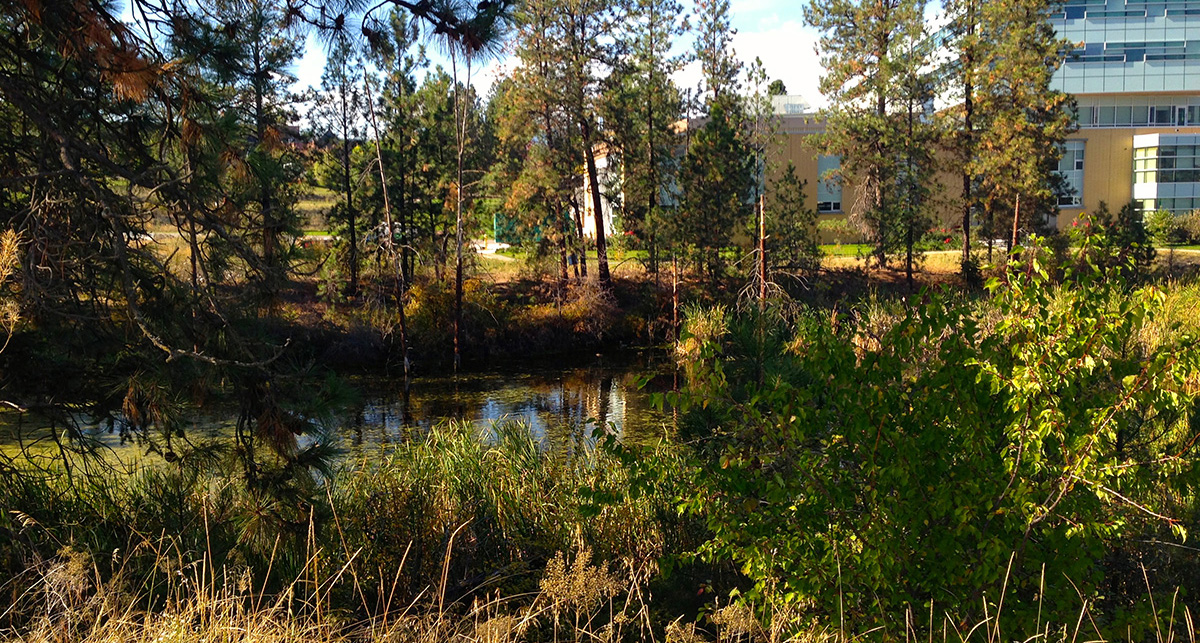THE POND
To understand the future conditions of the Pond, a series of rainfall modeling exercises were completed.
Overview
Many students and faculty are committed to protecting and preserving the pond as it provides many ecological, social, and education benefits to the campus community (realizing that it requires intrusive maintenance from time to time). The pond has been identified as an important feature at UBC, and is to be protected.
The existing storm sewer system has a history of flooding at some locations during heavy rainfall and increased volumes pose a concern to pond water levels. To understand this impact, along with the impact of future development, a series of rainfall modeling exercises were undertaken by Urban Systems. In total, 4 campus land use conditions were evaluated:
- Existing Land Use Condition
- Future Land Use Condition with no site controls
- Future Land Use Condition with site controls applied to mandatory Project sites (sites which have a total impervious surface greater than what exists today).
- Future Land Use Condition with site controls applied to all Project sites
Annual average percentage of rainfall diverted to the Pond
| Existing | Future
(No LID) |
Future
(LID at mandatory sites) |
Future
(LID at all sites) |
|
| Average Year | 37% | 44% | 28% | 25% |
| Wettest Year | 39% | 47% | 30% | 28% |
| Driest Year | 34% | 42% | 27% | 23% |
Table Notes:
- The catchment area of Existing Conditions is 41.5 hectares and for Future conditions 51.3 hectares
- This table describes the fraction of total rainfall transported to the pond as runoff (similar to a runoff coefficient). It is typically a larger value for areas with low infiltration and high runoff (pavement, steep gradient), and lower for permeable, well-vegetated areas (forest, flat land).
To further evaluate the potential effect of site controls on the pond, analysis was undertaken to determine how the pond water level (for the vast majority of time) might differ in each of the future land use conditions.
Change in Pond water level
| Existing |
Future (No LID) |
Future (LID at key sites) |
Future (LID at all sites) |
|
| Area (hectares) | Baseline | + 10 cm | Same as Baseline | – 5 cm |
Considerations
In most cases, the application of site controls can offer a significant reduction in both peak flow and runoff volumes, particularly if applied to all Project areas. Maximizing site retention is also highly advantageous from the perspective of storm sewer performance and flood risk.
However, retaining water on site will reduce the water inputs to the existing pond. While reducing high flows would be a benefit to the pond, reducing low flows may be detrimental. Site controls will be more effective at reducing low flows than high flows, and it is the low flows during drier periods of the year that are most critical to the health of the existing pond. With the application of site controls at new projects, a monitoring program will be an important component of the IRMP implementation to monitor flows to the pond to ensure its health.
